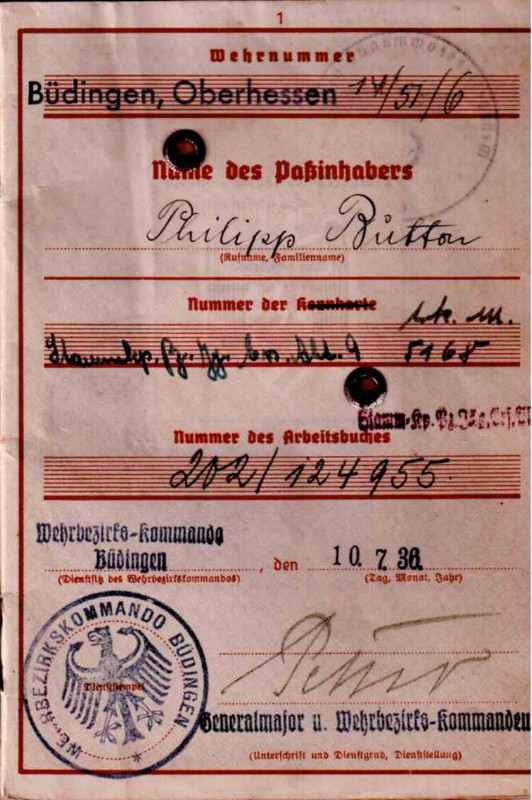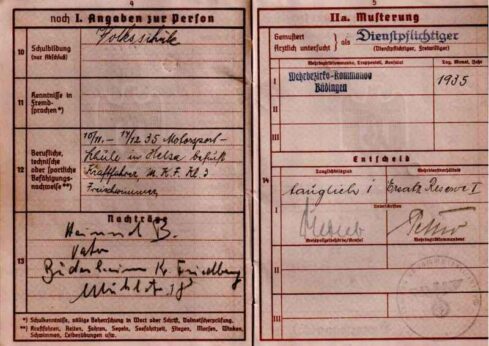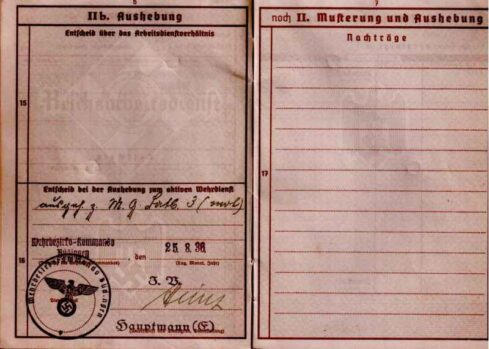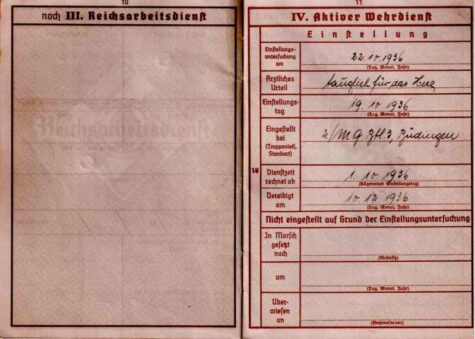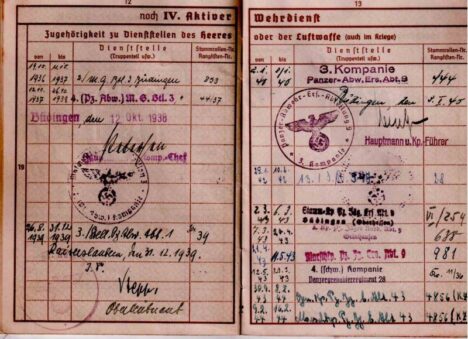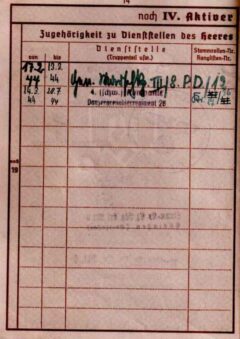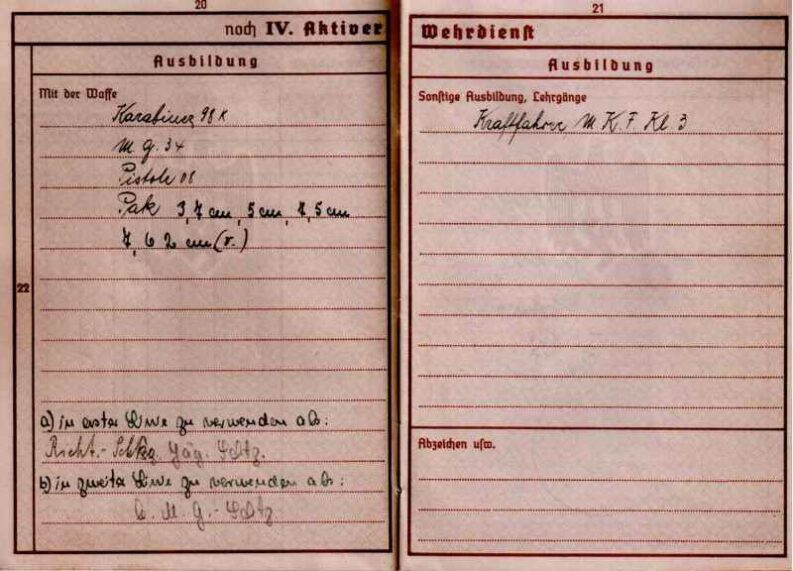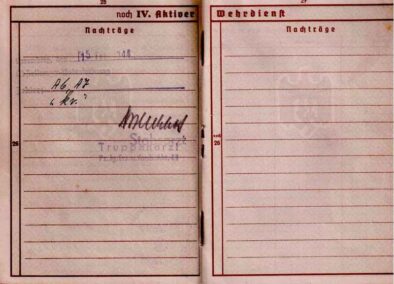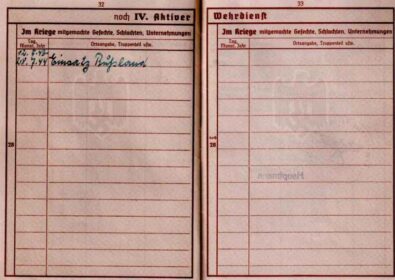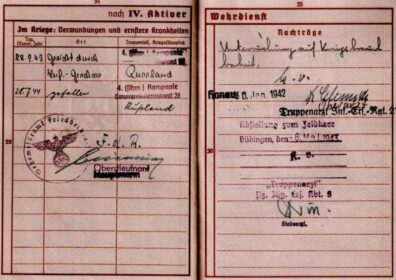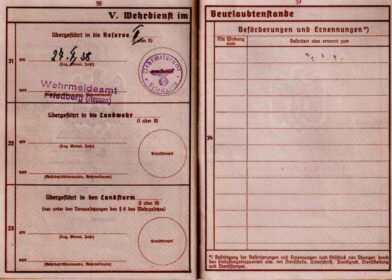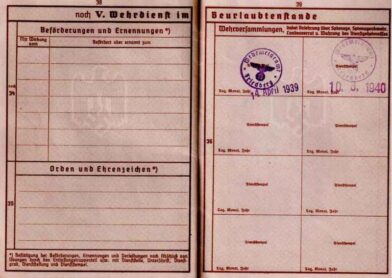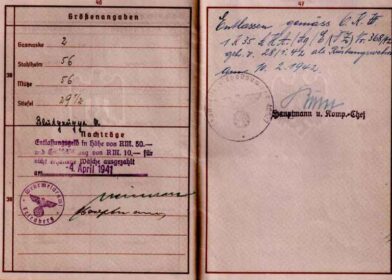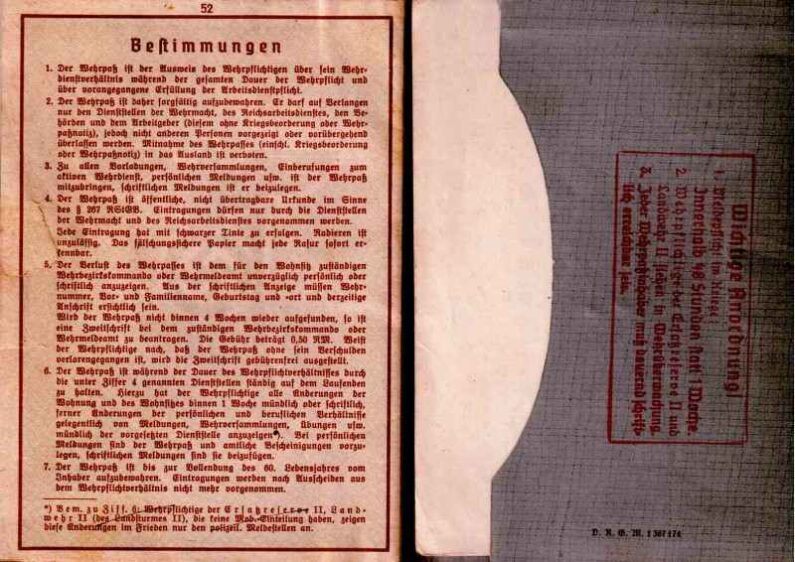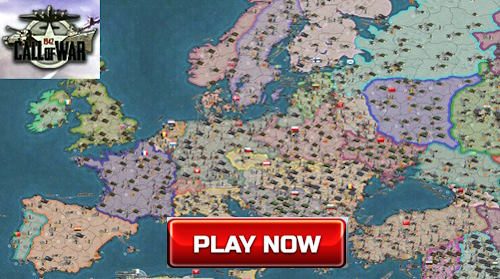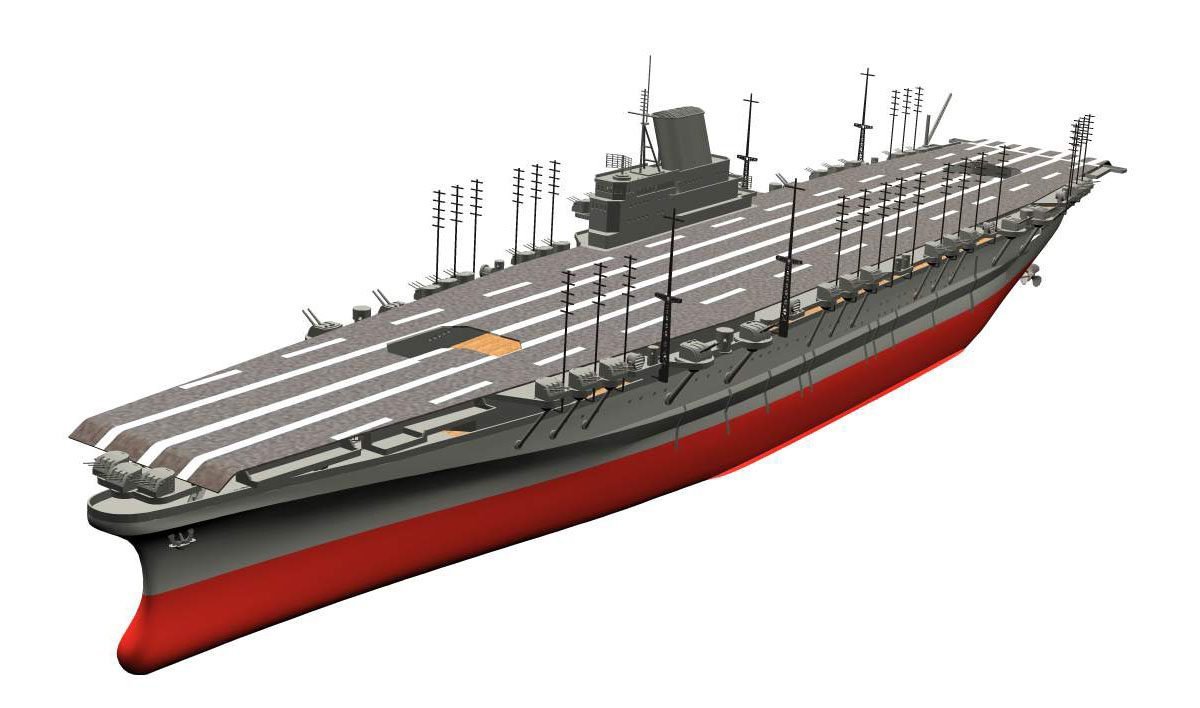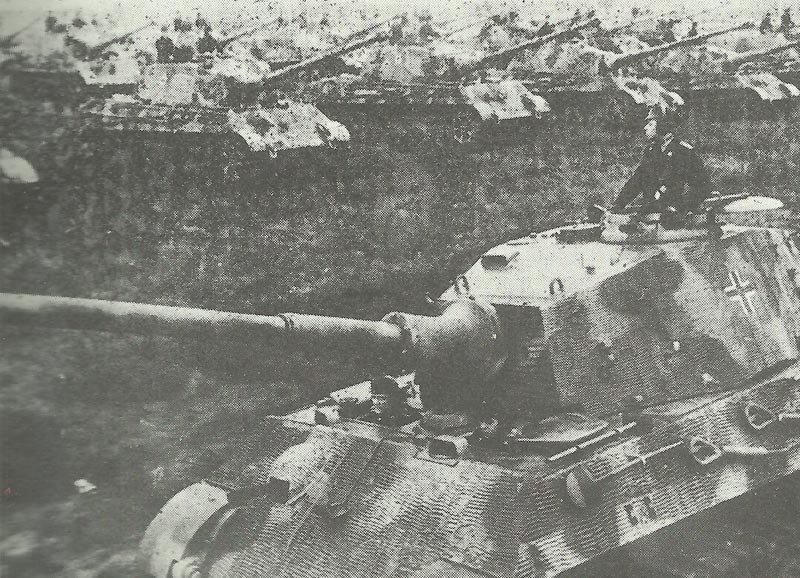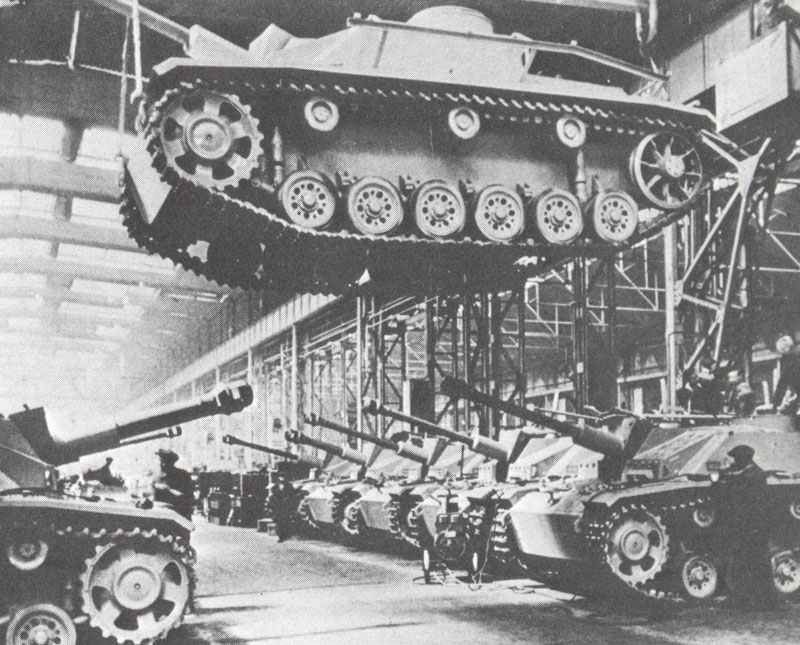German military passport of the Wehrmacht from WW2.
Extracts from the German army passport the uncle of the author. In a Wehrmacht Wehrpass there are some interesting information about the conscription, weapons training, operational use, units, wounds etc.
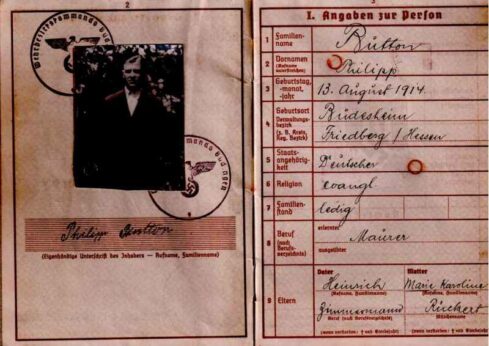
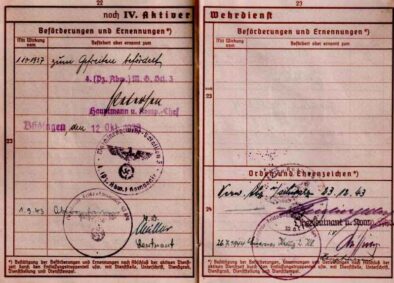


Information on the military service pass
The military service pass was issued to all male conscripts in the Third Reich after the introduction of compulsory military service. It recorded their fitness for military service along with other personal details. The document remained with the owner and had to be used to identify oneself to the military authorities and to prove the right to carry weapons during service.
The military service pass was a very comprehensive documentation book that was issued to all conscripts when they registered for compulsory military service and which the potential conscript kept until he was called up for military service. When the citizen became a soldier, he handed in his military service pass and received a pay book in return, whereby the military service pass was handed in and kept by the unit in which the owner served.
The military service pass was only returned to the holder when he was discharged from the military after his records had been transferred to the military record book. He was obliged to keep it until the age of 60.
In the event of death in service or after being officially reported missing, the military service record book was sent to the next of kin via the original military replacement district office.
The 54 pages between the grey covers of the military service record show the owner’s military career in chronological order.
The extensive and detailed data includes information on the units in which the owner of the military service record served, the battles, military operations and campaigns in which he took part, the honours he received, promotions and various other notes.
Inside the cover of the document there was a sleeve for storing other documents, and on the first page there is a picture of the owner. This photo usually shows the person in civilian clothes, unless they were already active in the military at the time of enlistment.
All four branches of the Wehrmacht used the Wehrpass with only minor differences. The branch of the armed forces (army, air force, navy or Waffen-SS) was stamped in a box on the cover of the book.
There were also three basic types of military passports with different covers: from the pre-war period and the beginning of the war, from the middle of the war and towards the end of the war.
The early military passports show the Wehrmacht eagle, while the middle and late passports have an eagle with open wings.
Most of the official files and documents relating to the personal details of members of the Wehrmacht had been lost or destroyed by the end of the war. The documents of the central offices of the Wehrmacht and the army command, the offices and troops of the army below divisional level as well as the Luftwaffe and the Waffen-SS were also largely lost.
Only the bulk of the war diaries of the army command authorities and the divisional staffs up to 1943 and the archives of the navy survived the war. Likewise, the archives of the Wehrmacht’s technical defence facilities and offices have been almost completely preserved.


